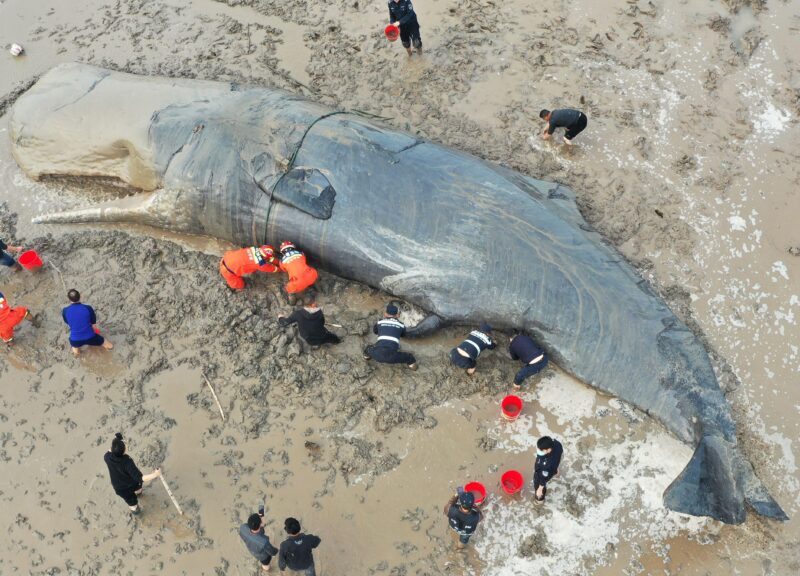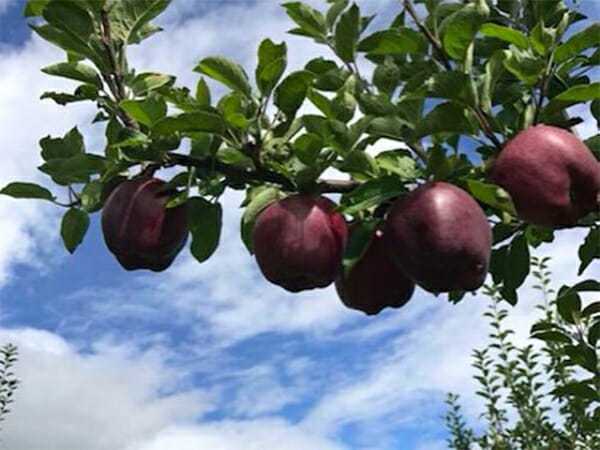The ‘sapsucker’ part of the red-breasted sapsuckers name, while accurate, doesn’t tell you that this bird that is commonly found in the forests of North America is, in fact, a type of woodpecker. This medium-sized woodpecker makes its home on the West Coast.
The ‘red-breasted’ part of its name is also misleading. In addition to having red plumage on its breast, the red-breasted sapsucker also has a red head and red throat.
Let’s look at 12 interesting facts that make the red-breasted sapsucker a fascinating bird.
1. It Is A Precision Driller
Like all woodpeckers, the red-breasted sapsucker uses its beak to drill holes in trees. The red-breasted sapsucker, however, is careful and precise about its hole placement.
When it pecks the wood, the red-bellied sapsucker creates a series of tiny, neatly spaced holes. If you find horizontal rows of small holes on oak, ash, birch, or willow trees, it was probably the work of the red-breasted sapsucker.
2. It Eats Sap… And More
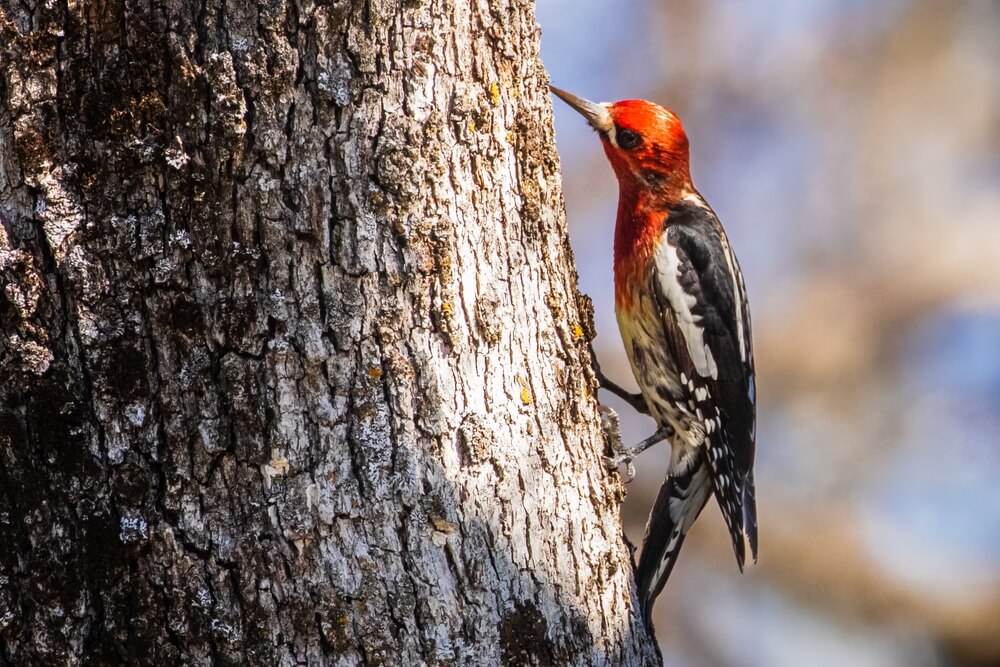
After the red-breasted sapsucker drills its holes in trees, it will come back to them from time to time. The bird will suck up the sap oozing from the holes, but also dine on the ants and other insects that are attracted to the sap.
A diverse diner, the red-breasted sapsucker also eats the wood it pecks, berries, seeds, and fruits. It will even swoop on flying insects from the air.
3. Red-Breasted Sapsuckers Have A Following
Other species of birds, like hummingbirds and warblers, have been observed following the movements of the red-breasted sapsuckers. It is not because they are big fans; it is because this bird makes their lives easier.
Rufous hummingbirds and other birds also dine on tree sap and small insects. They let the red-breasted sapsucker do the hard part – drilling the holes – and they enjoy the spoils. They drink the sap from the holes made by the red-breasted sapsuckers.
4. Red-Breasted Sapsuckers Have Favorite Trees
 Photo: David Seibold / Flickr / CC BY-NC 2.0
Photo: David Seibold / Flickr / CC BY-NC 2.0
The red-breasted sapsucker drills cavities in deciduous trees with a softer wood, like aspen and cottonwood, to make their nests. They position the nest holes high off the ground, more than sixty feet up the tree’s trunk.
The birds have their favorite trees. A red-breasted sapsucker will return to the same trees year after year, but it doesn’t reuse its old nesting cavity. It will drill a new one.
5. It Has A Hairy Tongue
The tongue of the red-breasted sapsucker is covered with short, coarse hairs.
This adaptation makes it easier for the bird to collect sap.
6. Red-Breasted Sapsuckers Are Vocal Birds
The red-breasted sapsucker is capable of producing a range of vocalizations.
Its drumming and tapping on trees are forms of communication, but it also makes a chattering noise, produces squeaks and squeals, and even screeches when it becomes alarmed.
7. It Sings And Dances To Court Its Mate
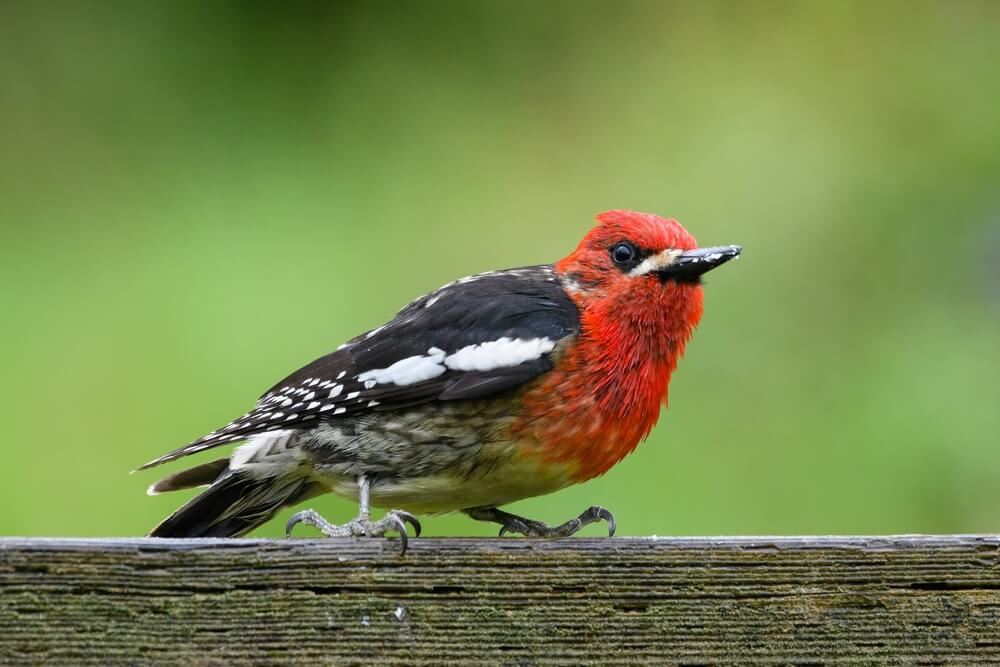
Many of the vocalizations made by the red-breasted sapsucker, including the squeals and chatters, are intended to attract a mate.
Males also dance to impress potential mates. They will tip their heads back, point their beaks to the sky, and sway back and forth in a rhythmic dance.
8. They Make Their Homes In The Pacific Northwest
Red-breasted sapsuckers are found on the west coast of North America.
You can see them in the forests of the Pacific Northwest, especially in the summer months, but their territory extends along British Columbia and into southern Alaska.
In the winter, they migrate to the milder weather in southern California and Baja, Mexico.
9. Red-Breasted Sapsuckers Share Parenting Responsibility
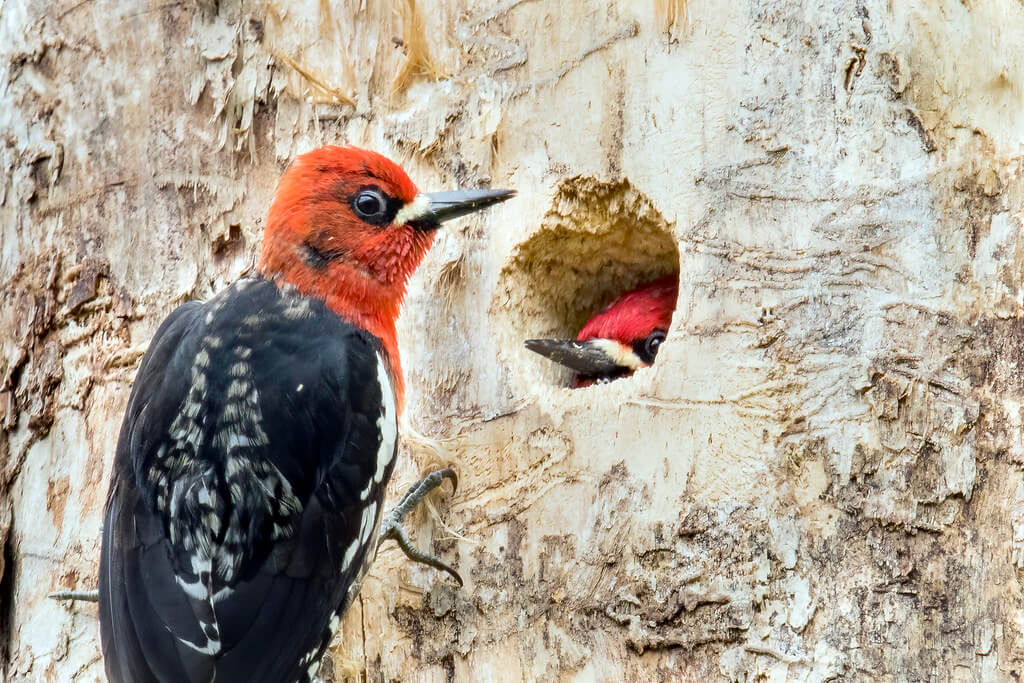
Red-breasted sapsuckers mate between April and May. The female will lay four to seven eggs in the nest cavity she has prepared and the eggs hatch after a two-week incubation period.
Both males and females share incubation duties. They also take turns feeding the newly hatched chicks. They bring them bits of fruit, small insects, and, of course, sap.
10. They Give Their Young Lessons In Sap Sucking
Before the red-breasted sapsucker chicks are ready to fend for themselves, the parents will teach them valuable life skills like how to drill holes and suck sap.
The young will leave the nest when they are about 25 days old, but they still rely on their parents to help feed them for another week or so.
They are fully independent when they master the hole-drilling techniques and learn how to suck sap.
11. There Are Hybrid Red-Breasted Sapsuckers

Red-breasted sapsuckers are close cousins of the red-naped sapsuckers and the yellow-bellied sapsuckers.
In fact, the red-breasted sapsucker can interbreed with either of these two birds. The result is a hybrid bird that can exhibit the physical characteristics of both its parents.
12. Red-Breasted Sapsuckers Have Mustaches
In addition to the red feathers on its head, breast, and throat, the red-breasted sapsucker has black wings and backs, yellow bellies, white rumps, and patches of white on its wings.
The birds all look like they are sporting white mustaches. There are thin rows of white feathers on either side of its beak.
